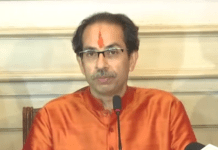Liberalisation of higher education sector allowing reputed foreign providers to establish and operate campuses in India will infuse much-needed competition among publicly-funded Indian universities to improve (particularly on the count of research output and learning experience of students) which also becomes an imperative for them anyway so as to avoid possibility of creation of inequality of opportunity in employment in private/corporate sectors due to nature of ‘‘student recruitment’’ in Indian campuses of foreign universities.
University Grants Commission (UGC), the regulator of higher education sector in India has issued Public notice and draft of Regulations, on 5th January 2023, for consultation that aims to facilitate the establishment of campuses of foreign universities in India and to regulate them. Upon receiving the feedback from the stakeholders, UGC will examine them and make necessary changes in the draft and release the final version of regulation by the end of this month which is when it comes in to force.
In line with the recommendations of the National Education Policy (NEP), 2020, the regulatory framework, with an aim of internationalisation of higher education sector, allows the entry of higher-ranked foreign Universities to operate in India so as to provide an international dimension to higher education, to enable Indian students to obtain foreign qualifications at affordable cost, and to make India an attractive global study destination.
The key provisions of the draft Regulation are
- Eligibility: The regulation allows for setting up campuses in India by universities in top 500 global ranking (overall or subject wise). Those highly reputed universities who do not participate in global ranking will also be eligible.; freedom to open campus across the country minus the GIFT City; UGC approval will be required; two years of window period to establish campuses, initial approval for 10 years, further renewal of permission to continue subject to outcome of review.
- Admission: Foreign universities free to decide their own admission policy and criteria for admission of Indian and foreign students; policy of reservation for Indian students not applicable, up to foreign university decide on criteria of admission.
- Scholarship/financial assistance: Need based scholarship/financial assistance to students from the funds generated by the foreign universities; No Indian government aid or funding for this.
- Tuition fee: Freedom to foreign universities to decide fee structure; UGC or Government will have no role
- Quality of education at par with that of the main campus in the native country; Quality assurance audit will be done.
- Courses: Only physical mode courses/classes allowed; Online, off-campus/distance learning mode courses not allowed. Should not jeopardise India’s national interest.
- Faculty and staff: Freedom and autonomy to recruit regular full-time faculty and staff from India or abroad, faculty should stay in India for a reasonable period of time, visiting faculty for short period not allowed
- Compliance with FEMA 1999 rules in repatriation of funds;
- Legal entity could be under Company Act, or LLP or Joint Venture with an Indian partner or a branch office. Can start operation in partnership with an existing Indian institution as JV. This will be of particular interest to existing Indian universities.
- Can’t close program or campus abruptly jeopardising interest of students without notifying UGC
These wide-ranging provisions are liberating to the higher education sector of India and can help internationalise this sector. Can save foreign exchange outflow on count of Indian students going abroad for education (about half a million Indian students went abroad last year at the cost foreign exchange outflow of about $30 billion).
Most significantly, this regulation will infuse spirit of competition in publicly-funded Indian universities. To be attractive, they will need to improve particularly on the count of research output and learning experience of students.
However, the idea of overseas education is also about gaining a life experience of living in a foreign land and is often linked to the plan of immigration. Studying in Indian campuses of foreign university may not be very helpful to those with such plans. Such graduates may form/remain part of Indian workforce.
On a more serious note, this reform has the potential to widen the rich-poor divide and create ‘’two classes’’ of professionals in the workforce. Students from affluent families with English medium background will find themselves in Indian campuses of foreign universities and will end up with good jobs in private/corporate sector, while those with non-English background from resource constrained families will end up attending Indian universities. This inequality of opportunity in terms of access to education in Indian campuses of foreign universities will eventually turn into inequality of employment opportunity in private and corporate sector. This can contribute in ‘elitism’. Publicly funded Indian universities, may mitigate this possibility, if they could rise to the occasion and improve on the quality to enable their graduates to bridge the gap in skill set necessary for employment in corporate sector.
Notwithstanding this, the reforms are momentous for the Indian higher education sector.
***























